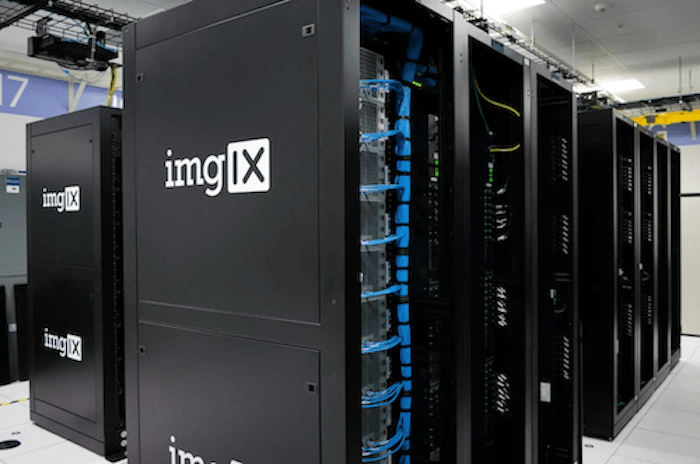Accelerate innovation with expert .NET MAUI development services
Build modern, high-performance mobile and desktop applications with a single codebase. Our .NET MAUI developers create enterprise-grade apps that run seamlessly on iOS, Android, Windows, and macOS.
.png)
Why hire .NET MAUI developers remotely?
Work with developers experienced in .NET MAUI, Blazor Hybrid, Azure integrations, and cross‑platform UI, wherever they’re located.
Cut overhead and accelerate delivery by converting fixed hiring costs into flexible OPEX – ideal for both startups and enterprise teams scaling with .NET MAUI.
Quickly scale .NET MAUI resources up or down to match sprint goals, release milestones, or cross‑functional initiatives.
Our vetted .NET MAUI developers integrate smoothly with your CI/CD pipelines, coding standards, and delivery processes, often ramping up within weeks.
Collaborate in real time with engineers aligned to North American and European business hours.
Remote .NET MAUI developers bring expertise in building apps that run seamlessly across iOS, Android, Windows, and macOS from a single shared codebase.
.NET MAUI development services for cross‑platform, modern applications
CIGen’s .NET MAUI development services enable startups and enterprises to create high‑performance, multi‑platform apps using a single codebase. Whether you need to modernize existing Xamarin apps, build new mobile and desktop solutions, or integrate cloud‑connected features, our team delivers maintainable, scalable, and visually consistent solutions across iOS, Android, Windows, and macOS.
We architect apps with a single shared codebase using C#, XAML, and MVU patterns, ensuring seamless performance and native‑like experience across mobile and desktop platforms.
Our engineers create engaging interfaces with responsive layouts, adaptive design elements, and consistent branding for all device types and screen sizes.
Integrating Azure services such as Azure Notification Hubs, App Center, and Cognitive Services, we ensure your apps are connected, data‑driven, and future‑ready.
We implement automated testing pipelines and performance profiling to ensure stability, security, and a smooth user experience.
We review your current Xamarin codebase, dependencies, and third‑party libraries to define a smooth migration strategy.
The code is refactored to remove legacy APIs, optimize architecture, and make use of the latest .NET MAUI features.
We adapt user interfaces to use modern XAML patterns, making sure layouts look consistent across platforms.
Migration includes thorough regression testing to verify that all app features work as intended on iOS, Android, Windows, and macOS.
Access device capabilities such as camera, GPS, push notifications, and secure storage using platform‑specific APIs.
A shared C# codebase reduces maintenance costs and accelerates delivery timelines for both iOS and Android.
Our designs prioritize responsiveness, intuitive navigation, and consistent branding across mobile environments.
Automated testing ensures stability and high performance across various mobile devices and OS versions.
We adapt designs to desktop‑specific workflows, with flexible layouts and keyboard/mouse‑friendly interfaces.
Our apps integrate with system services such as file handling, notifications, and local storage for a native feel.
One codebase powers both Windows and macOS builds, minimizing duplication of effort and simplifying updates.
Desktop applications are built with secure authentication, encryption, and controlled access to sensitive data.
We use Blazor components for reusable business logic, integrated seamlessly with native device features.
Shared code and web UI components reduce time to market for multi‑platform projects.
Hybrid apps are designed to work offline with local caching and sync data when a connection is available.
Secure headless frontends with token-based auth, refresh logic, and granular access control using Angular Guards and interceptors.
We integrate REST and gRPC APIs to ensure your apps communicate effectively with enterprise backend systems.
Using Azure services such as Azure Functions, SignalR, and Event Grid, we enable real‑time processing and scalability.
Implement identity solutions like Azure AD B2C or OAuth 2.0 for secure authentication and user management.
Integration with CI/CD ensures frequent updates and controlled releases without disrupting user experience.
We track performance and user feedback to identify potential improvements before they become issues.
Your apps remain secure and up to date with timely application of patches and upgrades.
We implement new features based on business priorities and evolving technology requirements.
Scheduled audits ensure your application continues to deliver a fast and stable experience over time.
.NET MAUI tech ecosystem: technologies we work with
.NET MAUI development is strengthened by a rich ecosystem of Microsoft and open-source tools. Our engineers leverage modern frameworks, cloud services, and CI/CD practices to deliver cross-platform applications that are robust, scalable, and maintainable.
The primary programming language for .NET MAUI, enabling a single shared codebase across mobile, desktop, and hybrid platforms.
A markup language for building responsive, adaptive user interfaces with reusable components and declarative layouts.
Architectural patterns that help structure MAUI apps for better maintainability, testability, and separation of concerns.
A framework that allows embedding Blazor web components inside MAUI apps to reuse code and UI across web, desktop, and mobile.
A Microsoft service for continuous integration, automated builds, testing, distribution, and analytics of cross‑platform applications.
The primary integrated development environment (IDE) for building, debugging, and profiling .NET MAUI applications.
CI/CD automation tools that streamline builds, testing, and deployment for cross‑platform development.
A monitoring and diagnostics service used to track application performance, errors, and user behavior in real time.
Struggling to deliver cross‑platform apps on time and budget?
Leverage our .NET MAUI expertise to build high‑performance mobile and desktop applications with one shared codebase and faster release cycles.
Hire .NET MAUI programmers on your terms
Dedicated team
Get a cross-functional .NET MAUI team working exclusively on your project, ideal for complex cross‑platform applications, enterprise mobile/desktop solutions, or long‑term product builds.
We handle architecture, development, testing, and quality assurance while you focus on business outcomes.
Staff augmentation
Add .NET MAUI experts to your in‑house team to close skill gaps or speed up delivery.Our developers are experienced with C#, XAML, MAUI patterns (MVVM/MVU), Blazor Hybrid, Azure integration, and CI/CD workflows, and can integrate into your stack quickly.
Project-based delivery
For scoped .NET MAUI initiatives—from modernizing Xamarin apps to building new mobile or desktop apps, we manage the entire lifecycle: requirements, UI/UX, development, testing, and deployment.
Predictable timelines and deliverables with minimal management overhead.
Clients about our cooperation
See what our clients say about the way our team helped them leverage their business potential.

.NET MAUI vs Flutter: which framework suits your app?
Choosing the right cross-platform technology often comes down to the ecosystem and the type of applications you want to deliver.
While both .NET MAUI and Flutter aim to simplify building apps for multiple platforms, they differ significantly in language, tooling, integration, and performance characteristics.
MAUI is built on top of the .NET ecosystem using C#. This makes it a natural choice for teams already invested in Microsoft technologies, Azure, or enterprise backend systems. It benefits from a mature ecosystem, strong typing, and support for enterprise-grade patterns and tooling.
Flutter:
Flutter uses Dart, a language developed by Google, with a focus on simplicity and fast UI development. While Dart is less common in enterprise stacks, it is popular in the startup ecosystem due to its quick learning curve and strong community support.
Developers use Visual Studio, which offers advanced debugging, profiling, and seamless integration with Azure services. Built-in support for MVVM, Blazor Hybrid, and a rich set of libraries streamlines enterprise application workflows.
Flutter:
Flutter development is typically done in Android Studio, IntelliJ, or VS Code. It provides a fast hot-reload feature that accelerates UI iterations, but the tooling is less integrated with enterprise CI/CD pipelines by default.
UI development in MAUI uses XAML and C# with full access to native controls. The UI behaves consistently with the host platform, producing a native look and feel while supporting adaptive layouts and custom renderers.
Flutter:
Flutter renders UI using its own Skia graphics engine, providing pixel-perfect control and consistency across devices. However, this approach sometimes requires additional work to replicate a native experience for certain platform-specific behaviors.
With tight integration into the Microsoft ecosystem, MAUI makes it straightforward to connect with Azure, REST APIs, gRPC services, and enterprise authentication mechanisms like Azure AD. It is an excellent choice for enterprise scenarios that require secure, scalable cloud solutions.
Flutter:
Flutter can integrate with REST and gRPC services, Firebase, and third-party APIs effectively. While it has strong support for Firebase, integration with enterprise-level Microsoft services often requires additional custom code and plugins.
MAUI compiles to native code and uses the .NET runtime for high performance and efficient memory management. Microsoft provides long-term support, regular updates, and backward compatibility, making it a reliable option for enterprise software with a multi-year lifecycle.
Flutter:
Flutter also achieves excellent performance with its compiled Dart code and GPU-accelerated rendering. However, as it is evolving rapidly, frequent updates may introduce breaking changes that require extra maintenance in long-running enterprise projects.
Advantages of .NET MAUI application development
.NET MAUI empowers businesses to build cross‑platform applications faster and more efficiently by using a single, modern framework. It eliminates the need for separate iOS, Android, Windows, and macOS codebases, reducing cost and complexity while ensuring a consistent user experience across devices.
Write once in C# and XAML and run everywhere, cutting down on duplicate development efforts and simplifying long‑term maintenance.
Access native APIs and hardware acceleration to deliver apps that feel and perform like fully native applications on every platform.
Streamline the development cycle by reusing components and leveraging built‑in tools, accelerating releases without compromising quality.
Easily integrate Azure services, REST APIs, and enterprise systems to build connected, data‑driven apps with advanced features.
Our .NET MAUI developer hiring process
We make it easy to scale your engineering capacity with experienced .NET MAUI developers. Our streamlined process ensures you get the right talent quickly, whether you need a single engineer or a full cross‑functional team. From understanding your requirements to onboarding and delivery, we handle the details so you can focus on your product.
We start by clarifying your project scope, technology stack, and resource needs to define the profile of .NET MAUI developers required.
We evaluate our in‑house pool of .NET MAUI engineers to identify available specialists who match your requirements for faster allocation.
If additional capacity is needed, we source pre‑vetted developers from our extended network and present you with carefully selected profiles.
Candidates undergo coding tests and technical interviews focusing on .NET MAUI, C#, XAML, MVVM/MVU patterns, and cross‑platform development practices.
You interview and assess shortlisted candidates to ensure they fit your technical requirements and company culture.
Once approved, we handle paperwork and onboarding so that selected engineers can join your team quickly with minimal disruption.
Your new .NET MAUI developers start contributing from day one, integrating into your workflows, CI/CD pipelines, and communication tools.
FAQ: .NET MAUI development
We’ve compiled answers to the most common questions about .NET MAUI development, covering the framework itself, Xamarin migration, cloud integration, Blazor Hybrid apps, and how we work with clients.
This section helps you understand both the technology and our approach to delivering cross‑platform solutions.
A .NET MAUI Blazor Hybrid app combines MAUI’s cross‑platform native capabilities with Blazor’s reusable web components. This approach allows developers to share UI and logic between web, mobile, and desktop, enabling faster delivery and a consistent user experience.
You can hire .NET MAUI developers through specialized software development companies. Look for developers with expertise in:
- C#, XAML, MVVM/MVU
- Cross‑platform patterns
- Azure and CI/CD pipelines
- Experience with Xamarin migrations and hybrid app development
Partner with experienced .NET MAUI development company to deliver apps that are scalable, cloud‑ready, and enterprise‑grade.














